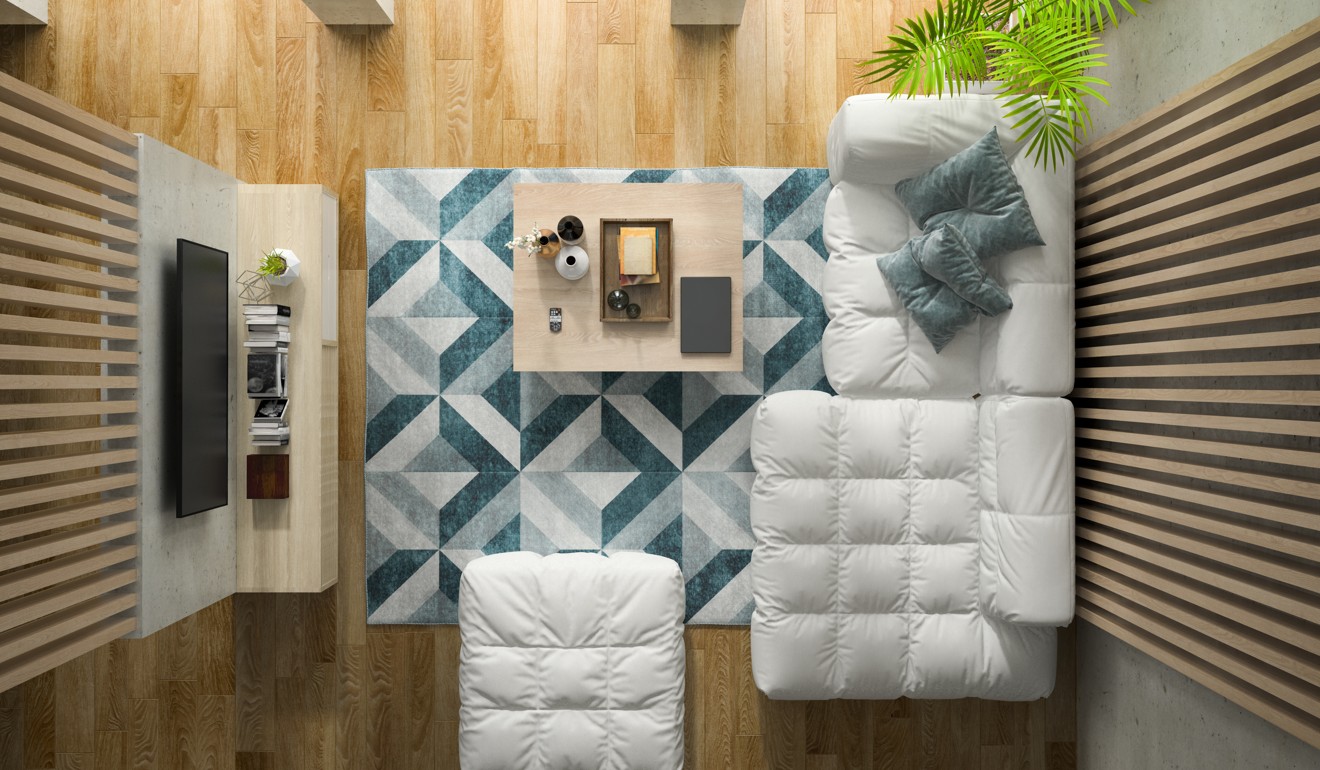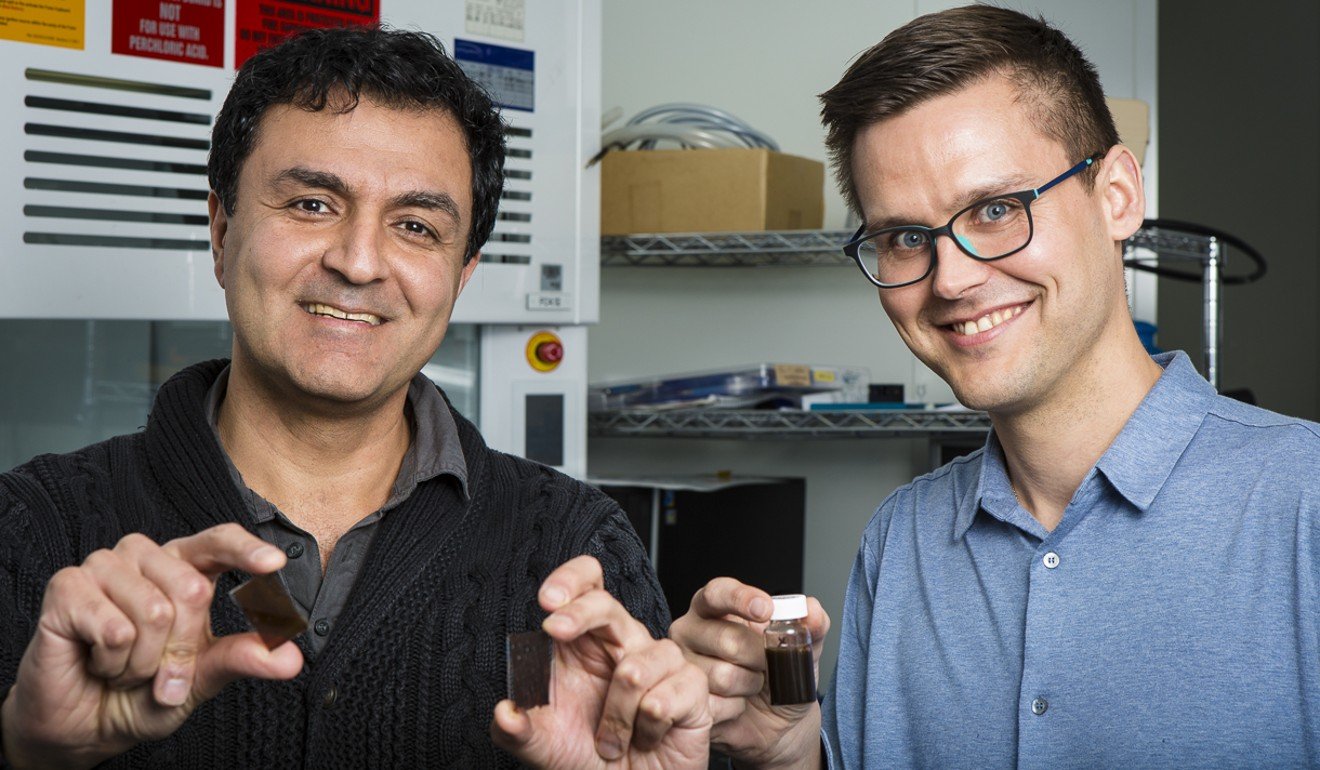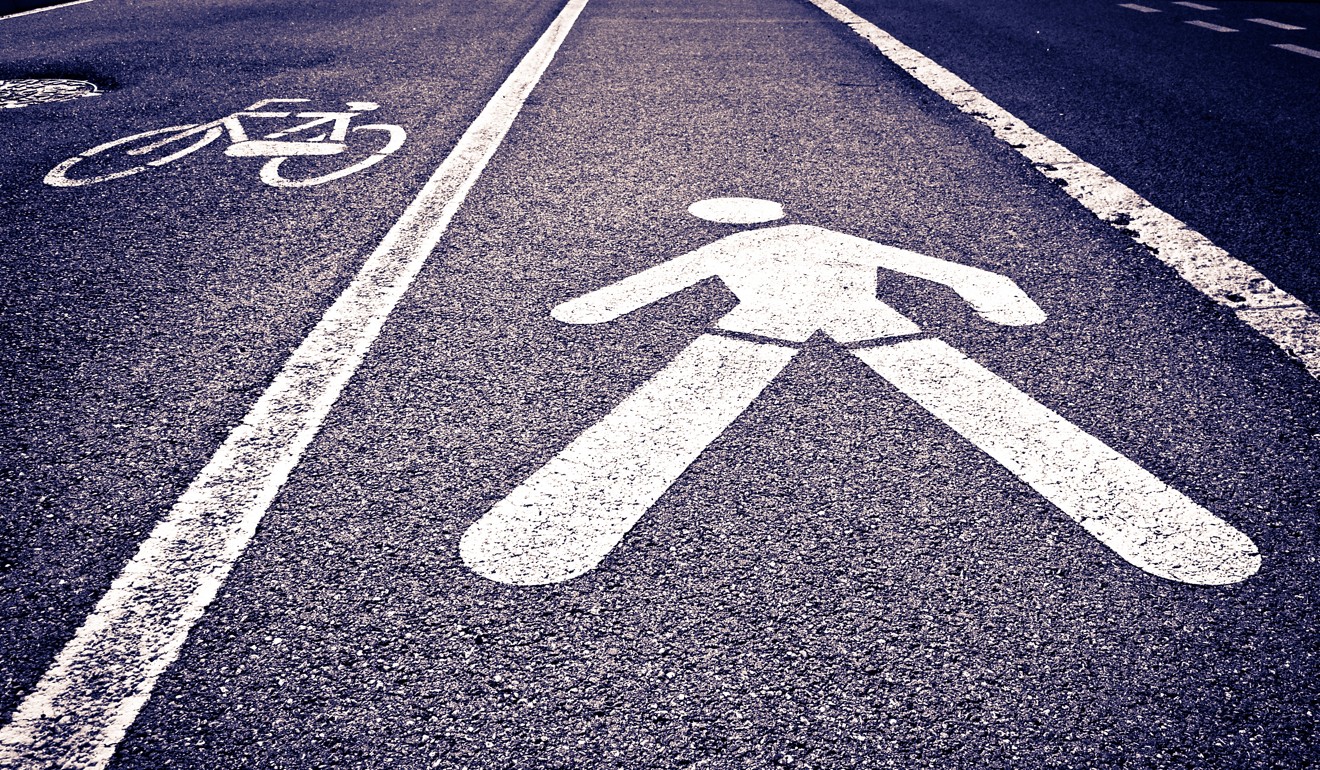
Smart paints to colour our world – capture energy and stay connected
- Solar emulsion that produces clean energy from sun and water vapour in the air and ‘spray on’ antennas offering internet connection among innovations
- Another paint that grows cool in sunlight may mean end for air conditioners while smart street emulsion could improve road safety for the partially sighted
Choosing a paint colour is a decorating decision people agonise over.
Yet soon householders may be pondering further: what can my paint choice do for me?
Turning a plain wall smart, or capturing energy from the atmosphere, are two of the possibilities that have already been discovered as scientists rethink uses for paint.
Walls have ears
Researchers have found a low-cost way to transform ordinary walls into smart infrastructure – simply by rolling on a hi-tech coat of paint.
As the Internet of Things and ubiquitous computing become reality, it is tempting to think that walls can become active parts of our living and work environments
The discovered was made by a team from Carnegie Mellon University in Pittsburgh, United States, and Disney Research – a unit of the entertainment conglomerate, Walt Disney, which was working on research with the university at its Robert Mehrabian Collaborative Innovation Center up until February.
Yang Zhang, a PhD student at the university’s Human-Computer Interaction Institute and the project’s lead researcher, said that the wall treatment and sensing hardware, Wall++, acted like a floor-to-ceiling trackpad.
It can track users’ touch and gestures, as well as estimate their body pose if they are close. By capturing airborne electromagnetic noise, it can also detect what appliances are active and where they are located.
The technique uses conductive paint to create electrodes in a diamond grid pattern across the surface of a wall, which is then finished with a top coat of standard latex paint.
The electrodes need a home hub for computation, connecting via Wi-fi, Bluetooth, or cables.
It could enable users to control smart home functions, such as turning on lighting by tapping lightly on the wall, alert a user in another location when an electric kettle turns off, or recognise the gestures of users playing video games – all this for about US$20 per square metre.
One of its benefits is privacy preservation.
“Unlike cameras, Wall++ does not reveal high-resolution information about users – instead, it tracks only users coarsely, which mitigates users’ concerns on privacy,” Zhang said.
The research had revealed “only a small fraction of what Wall++ can do”, he said.
“It is inspiring, with many more applications for [things such as] hospitals, museums, gyms, schools and offices.
“What if we turn walls into smart sensors that detect humidity, sound, vibration or other type of signals? Or to harvest energy, or maybe display information?”

Chris Harrison, an assistant professor at the university said: “As the Internet of Things [the network of devices that contain electronics and software which allows them to connect, interact and exchange data] and ubiquitous computing become reality, it is tempting to think that walls can become active parts of our living and work environments.”
For now, though, Wall ++ is only a concept.
“Since Disney owns the [intellectual property] IP of this technology, we don’t know and cannot reveal anything on the commercialisation plan,” Zhang said.
Solar paint produces clean energy
A solar paint that produces clean energy from the sun and water vapour in the air has been developed in Australia.
The paint created by researchers at the Royal Melbourne Institute of Technology University, in Australia, contains a newly developed compound that acts like silica gel, which is used in sachets to absorb moisture and keep food, medicines and electronics fresh and dry.
The simple addition of the new [synthetic] material to [white pigment used in paint] can convert a brick wall into energy-harvesting and fuel-production real estate
Yet unlike silica gel, the new material, synthetic molybdenum-sulphide, also acts as a semi-conductor and catalyses the splitting of water atoms into hydrogen and oxygen.
Surprising results were achieved when this compound was mixed with titanium oxide, the white pigment already commonly used in wall paint.
Dr Torben Daeneke, the lead researcher, said: “We found that mixing the compound with titanium oxide particles leads to a sunlight-absorbing paint that produces hydrogen fuel from solar energy and moist air.
“So, the simple addition of the new material can convert a brick wall into energy-harvesting and fuel-production real estate.”
Kourosh Kalantar-Zadeh, an honorary professor at the university, said the sunny days and high humidity of Hong Kong’s climate made the city the “perfect” environment for such technology.

“Our new development has a big range of advantages,” he said.
“There’s no need for clean or filtered water to feed the system. Any place that has water vapour in the air, even remote areas far from water, can produce fuel.”
It will not produce enough clean energy to power a house yet. For now, the paint will be complementary to photovoltaic solar panels.
Kalantar-Zadeh said that when solar panels first came on the market, they could harvest only a fraction of the sun’s energy compared with today’s technology.
“What we’ve done is proof of concept,” he said. “Extra steps of development should be done to reach the most efficiency.”
Hi-tech double layer’s ‘chill factor’
A new hi-tech paint that cools when exposed to sunlight holds promise as a better way to cool city buildings.
The technology developed by the Israeli company SolCold uses a double-layered coating of the paint to reduce temperatures by up to 10 degrees Celsius (50 degrees Fahrenheit) – and the hotter the sun gets, the better it works.
Think of it as a thin layer of ice that gets thicker and cooler as the sun gets stronger
The paint’s two layers work in tandem: the outer nano-filter blocking the sun’s rays and an inner layer turning heat on the surface it is applied to into cooling light.
“Think of it as a thin layer of ice that gets thicker and cooler as the sun gets stronger,” Yaron Shenhav, CEO of SolCold, said.
When applied to the rooftop of a building the paint could save up to 60 per cent of air conditioning costs – with the benefits both financial and environmental, he said.
“If it’s a new building, some air-conditioning systems could even be eliminated.”
He said the paint was “100 per cent green technology” and free of carbon emissions.
While still under development, its costs about US$50 to coat and area of 1 square metre (11 square foot).
The company expects the product to last on an exterior surface for 10 to 15 years before having to be re-applied.
SolCold has received inquiries from many places, including organisations in both Hong Kong and mainland China.
Shenhav said the first prototype, in the form of a thin nylon layer, rather than a paint, should be launched around September 2019, with commercialisation starting “probably one year later”. In another form, it will be developed as a thin fibre for clothing.
As for SolCold paint, Shenhav said cooling buildings was a mere “drop in a sea of potential”. He said: “It can be put on things such as cars, trains [and] containers – anything under the sun that is in need of cooling.”
‘Revolutionary’ spray-on antennas
This is a very exciting finding because there is a lot of potential for this type of technology ... new applications and ways of collecting data we can’t even imagine at the moment
Researchers at Drexel University College of Engineering, in Pittsburgh, have developed a spray-on coating that could revolutionise connection technology – namely antennas – on which the Internet of Things relies.
They reported in the Science Advances scientific journal that it is possible to spray invisibly thin antennas on a flexible surface that can perform as well as those being used in mobile devices, wireless routers and portable transducers.
The antennas are made from a type of two-dimensional, metallic material, called MXene, which is dissolved in water to create a paint.
The exceptional conductivity of the material enables it to send and direct radio waves, even when it’s applied in a very thin coating.
“This is a very exciting finding because there is a lot of potential for this type of technology,” Kapil Dandekar, a professor of electrical and computer engineering at the university, who was co-author of the research.
“The ability to spray an antenna on a flexible substrate or make it optically transparent means we could have a lot of new places to set up networks – there are new applications and new ways of collecting data that we can’t even imagine at the moment.”
Smart paint helps visually impaired pedestrians
Hi-tech paints could be making our cities smarter – and safer, too.
Like the smart paint developed by Ohio State University and partners to help the visually impaired navigate the urban environment.
John Lannutti, professor of materials science engineering at the university, said the goal of smart paint for networked cities was to provide accurate location services for the visually impaired.
Surprisingly, the current satellite-based navigation solutions actually could not tell whether somebody was walking on the footpath or down the middle of the street, he said.
Smart paint is created by adding exotic light-converting oxides to standard road paints.

The paint is detected using a “smart cane” – a modified white cane that detects the smart paint and enables portal-to-portal guidance. The cane can also be used to notify vehicles, including autonomous vehicles, of a user’s presence on a crossing.
Other potential applications for the technology include guiding airport ground vehicles to avoid collisions with moving aircraft.
Motorists and cyclists could also be safer in the future thanks to a “glow in the dark” road paint being developed in the Netherlands, which alerts road users to unseen conditions.
Yet however smart paint does become, its aesthetic value will surely be retained.
Edi Rama, Prime Minister of Albania since 2013, explained the value of paint in his absorbing and inspirational 2012 TED talk, “Take back your city with paint”, focusing on his 11 years as mayor of the nation’s capital, Tirana, when he transformed the city – giving it a unique style of its own by repainting the grey facades of many Soviet-style buildings.
He said the use of vibrant colours and dynamic murals had helped to define the city, beautify the environment and become a source of community pride.

